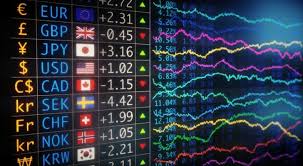Understanding Forex Trading Patterns A Comprehensive Guide 1791178250 Leave a comment

Understanding Forex Trading Patterns: A Comprehensive Guide
Forex trading is an intricate and dynamic field, filled with numerous strategies and methodologies. One key aspect that traders across the world rely on is the identification and interpretation of trading patterns. These patterns, often visible in price charts, provide insight into potential market movements and can significantly enhance trading strategies. For anyone interested in venturing into forex trading or improving their current approach, recognizing these patterns is fundamental. This guide dives deep into the world of forex trading patterns, highlighting their importance and practical application. If you’re looking for trustworthy resources, consider exploring forex trading patterns Forex Brokers in Uzbekistan to start your trading journey.
What Are Forex Trading Patterns?
Forex trading patterns are formations created by the price movements of currency pairs on charts. Traders analyze these patterns to make judgments about potential future price movements. They come in various shapes and sizes, typically classified as reversals and continuations. Recognizing these patterns can provide traders with critical insight into the market’s behavior and help them make more informed trading decisions.
Common Types of Forex Trading Patterns
1. Head and Shoulders
The head and shoulders pattern is one of the most well-known reversal patterns. It consists of three peaks: the left shoulder, head, and right shoulder. The pattern indicates a potential reversal of the current trend. An inverse head and shoulders pattern, on the other hand, signals a potential bullish reversal from a downtrend. It is crucial to wait for confirmation signals before trading based on this pattern.
2. Double Top and Double Bottom
The double top pattern forms after an uptrend and is characterized by two peaks at approximately the same price level, indicating a resistance level. Conversely, the double bottom pattern indicates a potential bullish reversal following a downtrend, where prices form two valleys at a similar level. These patterns are powerful signals of trend reversals and should be accompanied by volume to validate the signal.
3. Flags and Pennants
Flags and pennants are continuation patterns that typically appear after a strong price movement. Flags are rectangular-shaped and slope against the prevailing trend, while pennants appear as small symmetrical triangles. Both patterns indicate a brief consolidation period before the price continues in the direction of the prevailing trend. Traders often look for breakout points beyond these patterns to enter trades.
4. Triangles

Triangle patterns are formation patterns characterized by converging trend lines. They can be ascending, descending, or symmetrical. Each type indicates different market sentiments:
– Ascending triangles often suggest bullish continuation;
– Descending triangles indicate bearish continuation;
– Symmetrical triangles can lead to a breakout in either direction.
The breakouts from triangle patterns tend to be significant, providing potential trading opportunities.
5. Cup and Handle
The cup and handle pattern is a popular bullish continuation pattern. It resembles the shape of a cup, where prices decline, followed by a rounded bottom and then a rise to the previous high, creating the handle. This pattern indicates a pause before the price continues its upward trajectory, making it an attractive setup for traders looking to enter long positions.
How to Analyze Forex Trading Patterns
Analyzing forex trading patterns requires a solid understanding of technical analysis. Here are some steps to effectively analyze these patterns:
- Use Appropriate Time Frames: Different patterns can manifest across various time frames. Selecting the right time frame based on your trading strategy is essential.
- Look for Confirmation: Patterns should not be traded in isolation; always wait for confirmation signals, such as volume spikes or candlestick formations.
- Integrate with Other Indicators: To enhance accuracy, use forex indicators such as Relative Strength Index (RSI), Moving Averages, and MACD in conjunction with patterns.
- Practice Risk Management: Implement stop-loss orders and define your risk-reward ratio for every trade based on pattern analysis.
Common Mistakes to Avoid in Pattern Trading
Even experienced traders can make mistakes when trading based on patterns. Here are common pitfalls to avoid:
- Over-reliance on patterns without further analysis can lead to losses.
- Ignoring market news and economic events, which can significantly impact price movements.
- Failing to manage risk appropriately, leading to larger than anticipated losses.
- Acting prematurely on patterns without waiting for confirmation can lead to false signals.
Conclusion
Forex trading patterns play a critical role in technical analysis and can be powerful tools for traders when properly understood. By learning to recognize and appropriately react to these patterns, traders can significantly enhance their market entry and exit strategies. However, understanding patterns requires practice and should be combined with thorough market analysis and risk management practices. As you embark on your trading journey, consider leveraging reputable resources and trading platforms like forex brokers to guide you along the way. The world of forex trading is vast, but with the right tools and knowledge, it can also be rewarding.
